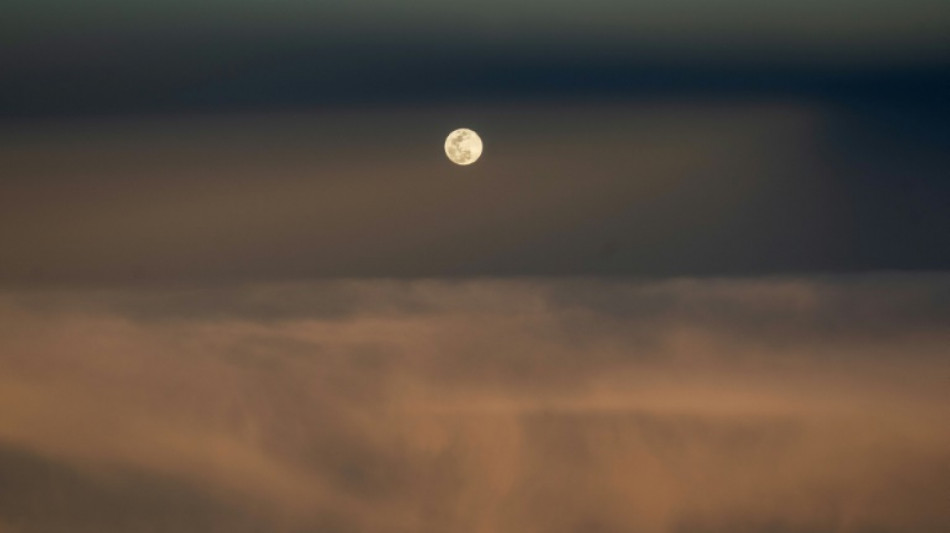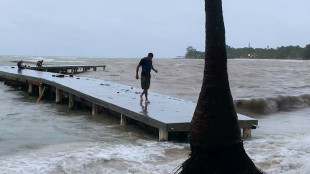
-
 Hoilett gives Canada win in Suriname as Mexico lose to Honduras
Hoilett gives Canada win in Suriname as Mexico lose to Honduras
-
Davis, James spark Lakers over Spurs while Cavs stay perfect

-
 Mushroom houses for Gaza? Arab designers offer home-grown innovations
Mushroom houses for Gaza? Arab designers offer home-grown innovations
-
Gabon votes on new constitution hailed by junta as 'turning point'

-
 Young Libyans gear up for their first ever election
Young Libyans gear up for their first ever election
-
Vice tightens around remaining civilians in eastern Ukraine

-
 Dutch coalition survives political turmoil after minister's resignation
Dutch coalition survives political turmoil after minister's resignation
-
Uruguay end winless run with dramatic late win over Colombia

-
 Max potential: 10 years since a teenage Verstappen wowed in Macau
Max potential: 10 years since a teenage Verstappen wowed in Macau
-
Tens of thousands flee as Typhoon Man-yi nears Philippines

-
 Is Argentina's Milei on brink of leaving Paris climate accord?
Is Argentina's Milei on brink of leaving Paris climate accord?
-
Big Bang: Trump and Musk could redefine US space strategy

-
 Revolution over but more protests than ever in Bangladesh
Revolution over but more protests than ever in Bangladesh
-
Minister resigns but Dutch coalition remains in place

-
 Ireland won 'ugly', says relieved Farrell
Ireland won 'ugly', says relieved Farrell
-
Stirring 'haka' dance disrupts New Zealand's parliament

-
 England's Hull grabs lead over No.1 Korda at LPGA Annika
England's Hull grabs lead over No.1 Korda at LPGA Annika
-
Kosovo players walk off in Romania after 'Serbia' chants, game abandoned

-
 Kosovo players walk off in Romania game after 'Serbia' chants
Kosovo players walk off in Romania game after 'Serbia' chants
-
Lame-duck Biden tries to reassure allies as Trump looms

-
 Nervy Irish edge Argentina in Test nailbiter
Nervy Irish edge Argentina in Test nailbiter
-
Ronaldo at double as Portugal reach Nations League quarters, Spain win

-
 Fitch upgrades Argentina debt rating amid economic pain
Fitch upgrades Argentina debt rating amid economic pain
-
Trump picks Doug Burgum as energy czar in new administration

-
 Phone documentary details struggles of Afghan women under Taliban
Phone documentary details struggles of Afghan women under Taliban
-
Ronaldo shines as Portugal rout Poland to reach Nations League last-eight

-
 Spain beat Denmark to seal Nations League group win
Spain beat Denmark to seal Nations League group win
-
Former AFCON champions Ghana bow out as minnows Comoros qualify

-
 Poland, Britain reach BJK Cup quarter-finals
Poland, Britain reach BJK Cup quarter-finals
-
At summit under Trump shadow, Xi and Biden signal turbulence ahead

-
 Lebanon said studying US truce plan for Israel-Hezbollah war
Lebanon said studying US truce plan for Israel-Hezbollah war
-
Xi warns against 'protectionism' at APEC summit under Trump cloud

-
 Nigerian UN nurse escapes jihadist kidnappers after six years
Nigerian UN nurse escapes jihadist kidnappers after six years
-
India in record six-hitting spree to rout South Africa

-
 George tells England to prepare for rugby 'war' against Springboks
George tells England to prepare for rugby 'war' against Springboks
-
Pogba's Juve contract terminated despite doping ban reduction

-
 Ukraine slams Scholz after first call with Putin in two years
Ukraine slams Scholz after first call with Putin in two years
-
Michael Johnson's Grand Slam Track series to have LA final

-
 Kagiyama, Yoshida put Japan on top at Finland Grand Prix
Kagiyama, Yoshida put Japan on top at Finland Grand Prix
-
Alcaraz eyeing triumphant Davis Cup farewell for Nadal after ATP Finals exit

-
 Xi, Biden at Asia-Pacific summit under Trump trade war cloud
Xi, Biden at Asia-Pacific summit under Trump trade war cloud
-
India go on record six-hitting spree against South Africa

-
 France skipper Dupont says All Blacks 'back to their best'
France skipper Dupont says All Blacks 'back to their best'
-
Trump pressures US Senate with divisive cabinet picks

-
 Bagnaia strikes late in Barcelona practice to edge title rival Martin
Bagnaia strikes late in Barcelona practice to edge title rival Martin
-
High-ball hero Steward ready to 'front up' against South Africa

-
 Leader of Spain flood region admits 'mistakes'
Leader of Spain flood region admits 'mistakes'
-
Swiatek, Linette take Poland past Spain into BJK Cup quarter-finals

-
 Leftist voices seek to be heard at Rio's G20 summit
Leftist voices seek to be heard at Rio's G20 summit
-
Wales coach Jenkins urges players to 'get back on the horse'


US prestige at stake as Texas company launches for the Moon
Another month, another Moonshot: An American spaceship attempting a lunar landing is to launch early Wednesday, the second private-led effort this year after the first ended in failure.
Intuitive Machines, the Houston-based company leading mission "IM-1," is aiming to become the first company to achieve a soft touchdown on Earth's celestial sibling, and land the first US robot on the surface since the Apollo 17 mission in 1972.
Its golf cart-sized Nova-C lander named "Odysseus" will blast off on top of a SpaceX Falcon 9 rocket from the Kennedy Space Center in Florida at 12:57 am local time (0557 GMT).
"We understand and welcome the responsibility of our IM-1 and mission as we hope to become the first commercial company to successfully land on the Moon," the company's Trent Martin told reporters.
It is due reach its landing site Malapert A on February 22, an impact crater 300 kilometers (180 miles) from the south pole, where NASA hopes to eventually build a long term presence and harvest ice for both drinking water and rocket fuel under Artemis, its flagship Moon-to-Mars program.
- Back to the Moon -
NASA paid Intuitive Machines $118 million to ship science hardware to better understand and mitigate environmental risks for astronauts, the first of whom are scheduled to land no sooner than 2026.
The instruments include cameras to document the effect of engine plume on the surface, a device to analyze dust haze that appears during lunar twilight, and precision landing technology that uses pulses of light from a laser.
NASA scientist Susan Lederer said the mission would go further south than any lander has been on the Moon "and will give us an opportunity to test our instruments in this very harsh environment where the Sun is always low on horizon."
There is also more colorful cargo aboard, including a digital archive of human knowledge and 125 mini-sculptures of the Moon by the artist Jeff Koons.
After touchdown, the payloads are expected to run for roughly seven days before lunar night sets in on the south pole, rendering Odysseus inoperable.
IM-1 is the second mission under a NASA initiative called Commercial Lunar Payload Services (CLPS), which the space agency created to delegate trucking services to the private sector to achieve savings and to stimulate a wider lunar economy.
The first, by Pittsburgh-based Astrobotic, launched in January, but its Peregrine spacecraft was hit by an onboard explosion that caused a fuel leak, and was eventually brought back to burn up in Earth's atmosphere.
- Busy calendar -
Soft landing a robot on the Moon is challenging because a spaceship has to navigate treacherous terrain amid a lag of several seconds in communications with Earth, and use its thrusters for a controlled descent in the absence of an atmosphere that would support parachutes.
Only five nations have succeeded: the Soviet Union was first, then the United States, which is still the only country to also put people on the surface.
In America's long absence, China has landed three times since 2013, India in 2023, and Japan was the latest, last month -- though its robot has struggled to stay powered on after a wonky touchdown left its solar panels pointing the wrong way.
Apart from Astrobotic's failed attempt, two other private initiatives got close: Beresheet, operated by an Israeli nonprofit, crash landed in 2019, while Japanese company ispace also had a "hard landing" last year.
Intuitive Machines has two more launches scheduled for this year, while another Texas company, Firefly Aerospace has one too. Astrobotic will get another shot in late 2024, carrying a NASA rover to the south pole.
A.Taylor--AT




